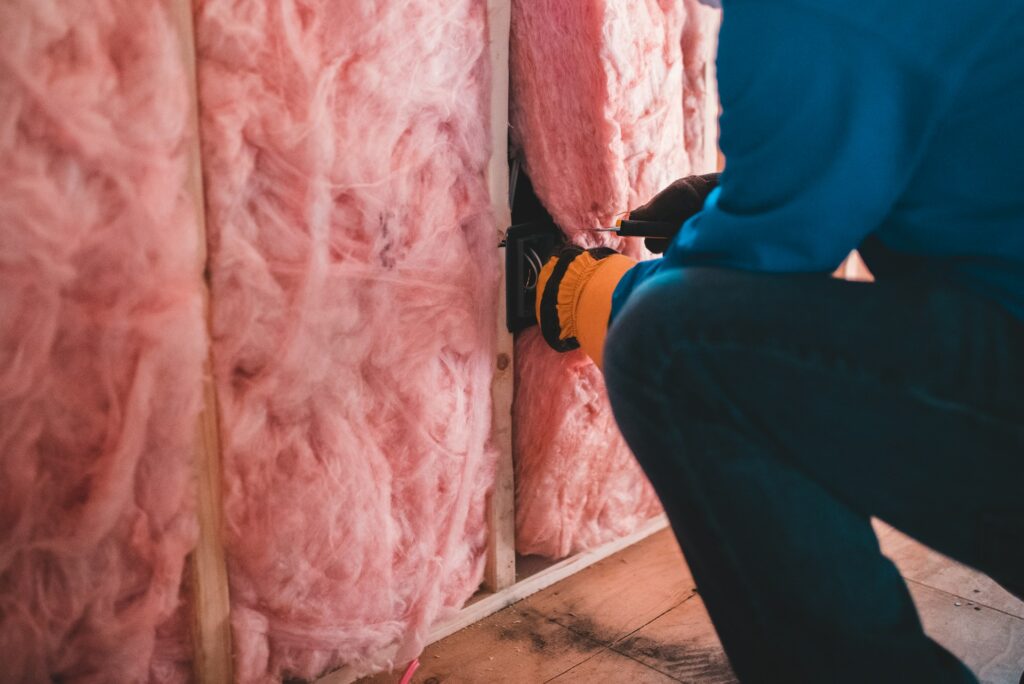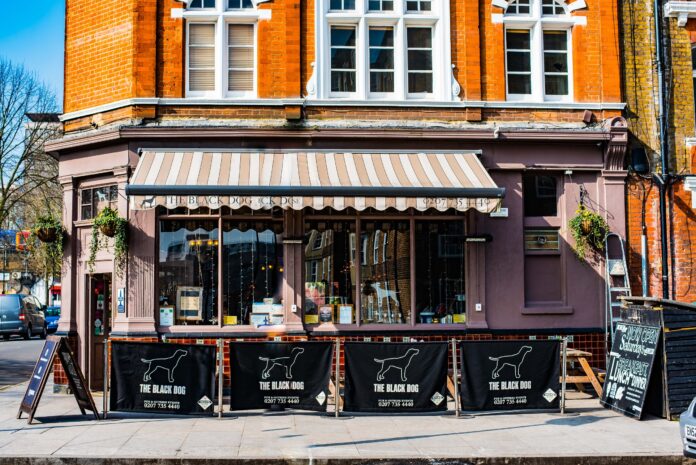In the quest for energy efficiency, comfort, and environmental responsibility, sustainable insulation is becoming increasingly important for modern homeowners. It’s the eco-conscious hero of our homes, quietly working behind the scenes to keep us warm in winter and cool in summer, all while minimising our carbon footprint. With a growing array of green options available, how does the environmentally-minded homeowner navigate the sustainable insulation landscape? Let’s explore the main eco-friendly insulation types that can help create a more sustainable home.
Natural Fibre: Sheep’s Wool Insulation
Sheep’s wool insulation is one of nature’s most brilliant thermal solutions. This remarkable renewable resource offers excellent thermal and acoustic properties while being completely biodegradable. Unlike synthetic alternatives, wool naturally regulates humidity by absorbing and releasing moisture, helping to prevent condensation and mould growth.
Available in batts or rolls, sheep’s wool for insulation is perfect for insulating lofts, walls, and floors. It’s also naturally fire-resistant and doesn’t require harmful chemical treatments. For the DIY enthusiast, wool insulation is safe to handle without protective gear, causing none of the skin irritation associated with fibreglass. While it may come at a premium price compared to conventional options, its longevity and environmental credentials make it a worthwhile investment for the eco-conscious homeowner.

Cellulose: Recycled Paper Insulation
Cellulose insulation is made from recycled newspapers and other paper sources, making it one of the most environmentally friendly options available with up to 85% recycled content. It’s treated with borate compounds to make it fire-resistant and protect against pests and mould.
As a loose-fill option, cellulose is ideal for retrofitting older homes, as it can be blown into walls and roof spaces without major disruption to existing structures. It fills cavities completely, eliminating air pockets that can reduce insulation effectiveness. This type of insulation excels at preventing air leakage and offers excellent sound dampening properties.
While professional installation is recommended for the blown-in variety, there are also wet-spray applications that adhere to surfaces, providing comprehensive coverage in difficult-to-reach areas.
Recycled Materials: Cotton and Denim Insulation
Recycled cotton and denim insulation represent circular economy principles at their finest. Made from post-industrial or post-consumer textile waste that would otherwise end up in landfills, these materials are transformed into effective insulation products.
This type of insulation contains approximately 85% recycled content and is treated with borate, a natural fire retardant that also deters pests. Like wool, it’s available in batts and is ideal for insulating walls, ceilings, and attics. It’s easy to install, non-toxic, and doesn’t cause skin irritation, making it another excellent choice for DIY projects.
The environmental benefits are substantial – manufacturing recycled cotton insulation requires significantly less energy than producing traditional fibreglass, and it diverts waste from landfills, reducing your home’s overall environmental impact.

Hemp Insulation
Hemp insulation represents one of the most rapidly renewable insulation options, as hemp plants can be grown to maturity in just 14 weeks. This fast-growing crop requires no pesticides, enriches the soil, and captures carbon dioxide during growth, making it carbon-negative before processing.
Available in batts or rolls, hemp insulation offers excellent thermal performance and superior moisture management. It’s naturally resistant to mould and pests without chemical treatments and is completely biodegradable at the end of its life cycle.
Hemp insulation is particularly good at reducing radiant heat gain in summer while maintaining warmth in winter, creating a comfortable, consistent indoor environment year-round.
Wood Fibre Insulation
Wood fibre insulation is manufactured from timber industry by-products, utilising material that might otherwise go to waste. Available in both rigid boards and flexible batts, it offers versatility for various applications throughout the home.
Beyond its impressive thermal properties, wood fibre excels at humidity regulation and noise reduction. It’s particularly valued in green building projects for its natural composition and minimal environmental impact during production.
Wood fibre boards can be used for external wall insulation, roof insulation, and even as a base for plaster, creating a breathable building envelope that contributes to a healthy indoor climate. While more expensive than conventional materials, wood fibre’s multifunctional benefits and sustainability credentials justify the investment.
Cork Insulation
An increasingly popular building material, cork is a truly remarkable sustainable insulation solution, harvested from the bark of cork oak trees without harming the trees themselves. The bark regenerates and can be harvested every 9-12 years, making it a genuinely renewable resource.
As an insulation material, cork offers excellent thermal and acoustic properties while being naturally resistant to fire, mould, and insects. It’s available in board form, which can be cut to size and fitted between joists or studs. Cork boards can also be used for floor insulation, providing both thermal benefits and impact sound reduction.
For those concerned about indoor air quality, cork is a superior choice as it doesn’t off-gas harmful chemicals and contributes to a healthier living environment. Though more expensive than conventional insulation, cork’s durability (it can last for decades) makes it cost-effective in the long term.

Mycelium Insulation
At the cutting edge of sustainable building materials, mycelium insulation represents an exciting innovation. Derived from the root structure of fungi, mycelium can be grown in moulds using agricultural waste as a food source, then heat-treated to create lightweight, fire-resistant insulation panels.
The environmental footprint is remarkably small – mycelium insulation is grown rather than manufactured, requires minimal energy input, and is completely biodegradable. It offers good thermal and acoustic performance while being naturally fire-resistant without chemical additives.
Though currently more limited in availability than other options, mycelium insulation showcases the potential future of truly sustainable building materials that work in harmony with natural systems.
Aerogel Insulation
For spaces where maximum insulation is required with minimal thickness, aerogel represents an advanced sustainable option. Often called “frozen smoke,” aerogel is the lightest solid material known, created through a process that removes liquid from a gel while leaving its structure intact.
Modern sustainable aerogels can be manufactured from silica, a naturally abundant material, through processes that are becoming increasingly energy-efficient. The resulting material offers exceptional thermal performance – up to three times better than conventional insulation for the same thickness.
This makes aerogel particularly valuable for insulating period properties where wall thickness is limited, or for improving the energy efficiency of older homes without significantly altering their appearance. While currently among the more expensive insulation options, aerogel represents an important innovation for specific challenging insulation scenarios.
The Bottom Line
Choosing the right sustainable insulation for your home involves balancing environmental credentials, performance, budget, and the specific requirements of your property. Each option offers unique benefits, from the superior moisture management of sheep’s wool to the space-saving potential of aerogel.
What’s clear is that sustainable insulation not only helps reduce energy bills but also minimises environmental impact throughout its lifecycle – from production using renewable or recycled materials, through installation without harmful chemicals, to eventual biodegradability or recyclability.
Sustainable insulation might not be the most visible aspect of an eco-friendly home, but it’s certainly one of the most impactful. So, here’s to a well-insulated, energy-efficient, environmentally responsible and comfortable home for generations to come!





